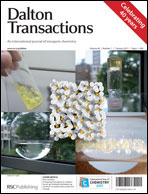Detailed Density Functional Theory (DFT) studies were conducted on the rhodium compounds [LRh(CO)Cl] (1), [LRhCl] (2) and [LRh(COD)Cl] (3) (L = cyclic (alkyl)(amino)carbene, CAAC; COD = cyclooctadiene). Particular attention was paid to the two cyclohexyl hydrogens of the CAAC which are in close proximity to the metal centre. Bader and NBO analyses confirmed an agostic interaction, and NBO analysis revealed that in the case of 1, the Rh–COantibonding orbital acts as an acceptor. Removal of the CO ligand (2) did not significantly change the agostic interaction of the two cyclohexyl hydrogens or the geometry of the cyclohexyl ligand. Replacement of the 2e− donor CO with the 4e− donor COD gives a different picture. Although both cyclohexyl hydrogens are still in close proximity to the metal centre, neither are agostically bound to it. In fact, the very weak interaction of one of them is of the same order as that present in the Cl–H bond. We thus suggest a revised description of agostic bonding.
![Graphical abstract: Agostic or not? Detailed Density Functional Theory studies of the compounds [LRh(CO)Cl], [LRh(COD)Cl] and [LRhCl] (L = cyclic (alkyl)(amino)carbene, COD = cyclooctadiene)](/en/Image/Get?imageInfo.ImageType=GA&imageInfo.ImageIdentifier.ManuscriptID=C0DT01116A&imageInfo.ImageIdentifier.Year=2011)
You have access to this article
 Please wait while we load your content...
Something went wrong. Try again?
Please wait while we load your content...
Something went wrong. Try again?
![Graphical abstract: Agostic or not? Detailed Density Functional Theory studies of the compounds [LRh(CO)Cl], [LRh(COD)Cl] and [LRhCl] (L = cyclic (alkyl)(amino)carbene, COD = cyclooctadiene)](/en/Image/Get?imageInfo.ImageType=GA&imageInfo.ImageIdentifier.ManuscriptID=C0DT01116A&imageInfo.ImageIdentifier.Year=2011)

 Please wait while we load your content...
Please wait while we load your content...